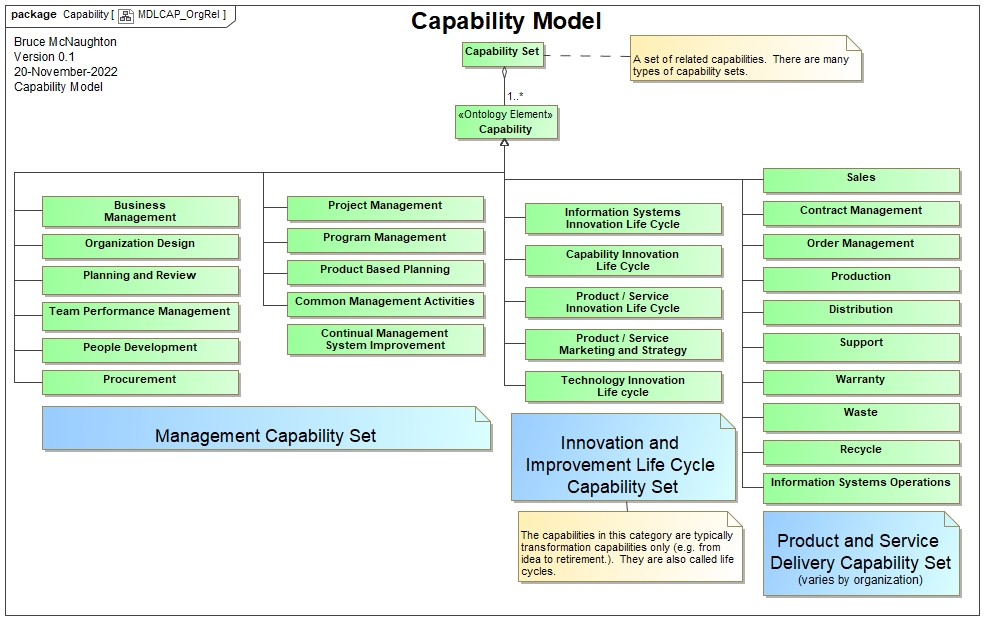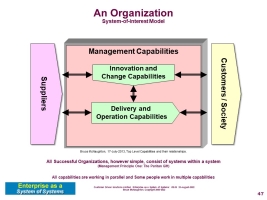Description
The Capability Model identifies the key capabilities that have associated capability descriptions to be implemented by teams (organizational subsystems) that interact to deliver a the purpose / mission / contribution of the organization. The capability model (or models) also describes the capability dimension of the Operating Model.
There are similar models that may serve the same purpose. Please see:
- Value Chain as an example of a Capability Model
- Core Diagram
The Process Model shows the relationships (interactions and dependencies) that underpin the various capability descriptions used within the organization or within a top level capability within an organization. This model is typically a list of capabilities or groups of capabilities that can be related to a set of organizations that will realize them
Each manager creates their team by planning for the realization of a set of capabilities within their team. See the Team system description for further information.
Contents
All organizations have three top level types of capabilities. All capabilities can be aligned to these three top level capabilities.
The top level capabilities are shown in the picture below.
Each of the top level capabilities will have an associated Capability Model. These include the current or target:
- Management Capability Model
- Development / Innovation Capability Model
- Delivery Capability Model (or Operating Model or BAU Model)
These models identify the capabilities delivered by one or more teams,.
Each capability in the capability model has a defined capability description can be allocated to one or more teams using the Team Model.
The allocation of the capabilities is a critical process of the organizational design process.
Other types of models may also be created. These relate to capability sets derived from particular areas. The Integrated Management System identifies a number of capability sets for each external standard that is used. These capability models help people understand where capabilities are used within the organization.
Languages, Notations, Conventions
Each capability represents an organizational sub-system. These sub-systems can be represented on an organization chart as a Team, Organizaitonal unit or through a specific process description.
Capabilities are named based upon their purpose and contribution to the organization. These capabilities are also related to the processes and activities that deliver the capabilities.
A capability has one unique process that describes the capability. The Capability Models may use a process class to represent a capability.
Methods - Create, Analysis, Identify
Create: Identify capabilities and position on a diagram
Analysis: Use the team model and process model to confirm the scope and structure of the capability.
Identify: Identify the capabilities using the appropriate label and include in the Capability View of the Enterprise (SoS) Architecture Description
Modelling Techniques
The Process Model and related process descriptions can be used to model / understand capability interactions.
Various types of models can be used for the Capability Model. The simplest approach is to use a Class Diagram.
Dynamic interaction of capabilities based upon the underlying process can be modelled on an activity diagram or a sequence diagram.
Object diagrams can also be used to highlight the allocation of capabilities to organizations or teams. This will allow additional context to be provided for the capabilities.
Examples
Here is an example capability model:

Various capability sets also use capability models:
See Planning System
References
Model Kind Links
